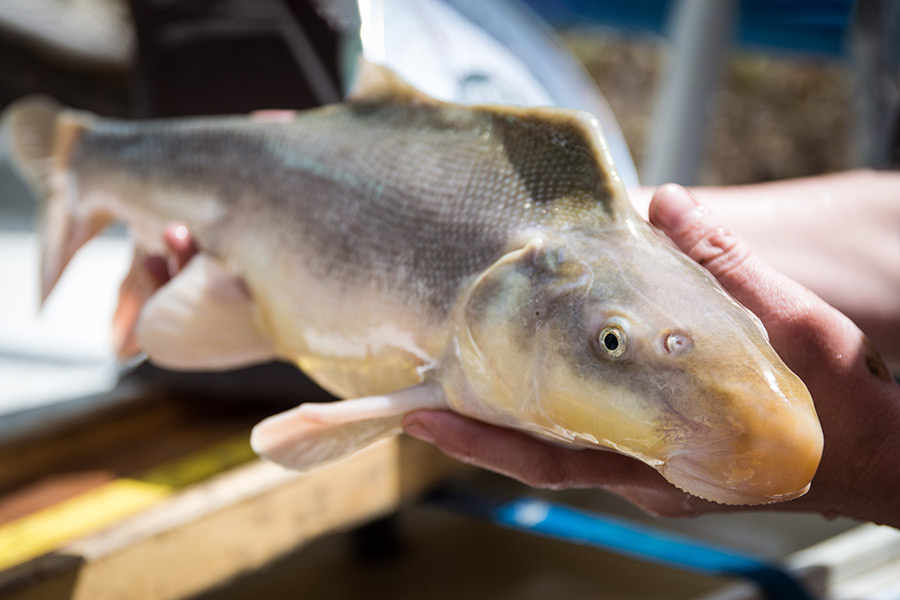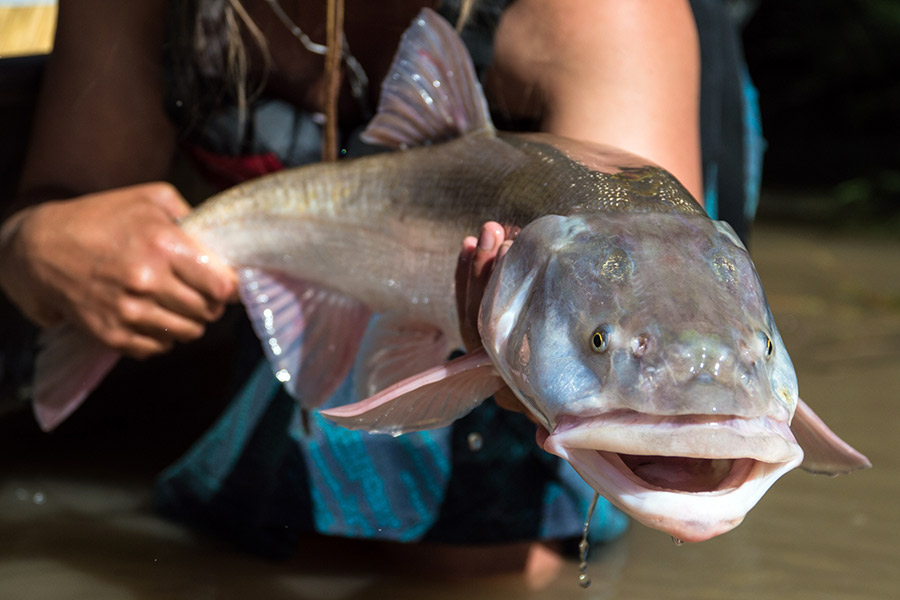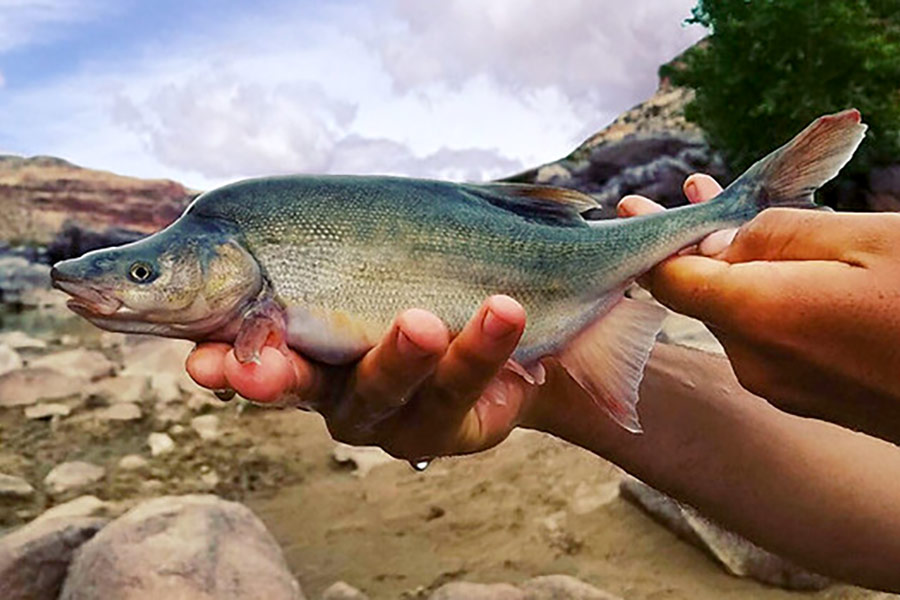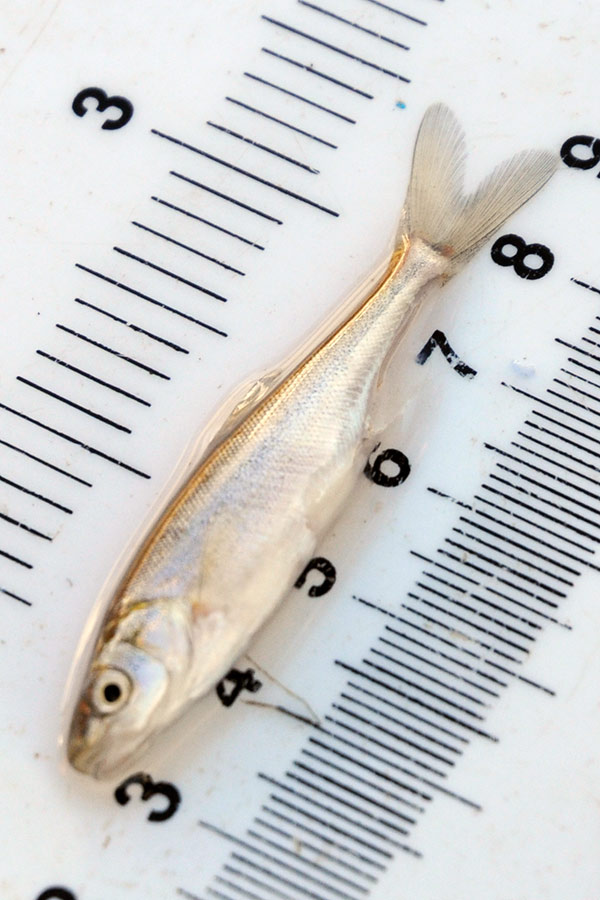50th anniversary of Endangered Species Act: A look at how the DWR, partnering agencies are helping 4 listed fish species recover
Salt Lake City — The Endangered Species Act was enacted in 1973 to establish protections for fish, wildlife and plants in the U.S. It has prevented the extinction of hundreds of imperiled species and promoted the recovery of many others. With the ESA now in its 50th year, here's a look at four fish species currently listed under the ESA and how several agencies are working to recover them.
There are currently 17 wildlife species in Utah on the federal endangered species list, with nine listed as endangered and eight listed as threatened. An endangered species is any species that is at serious risk of extinction in a specific area or throughout all of its natural habitat. A threatened species is any species that is likely to become an endangered species in the foreseeable future throughout much or all of its habitat. The U.S. Fish and Wildlife Service has jurisdiction over adding species to the threatened and endangered species list.
Since 2001, the DWR and other partners have helped prevent 20 wildlife species from being listed as endangered and threatened through conservation efforts. Four of those currently listed species are found in the Colorado and San Juan river basins: the Colorado pikeminnow, humpback chub, razorback sucker and bonytail.
"These species are uniquely adapted to the Colorado and San Juan river basins and aren't found anywhere else on Earth," DWR Recovery Programs Director Sarah Seegert said. "They are part of Utah's natural heritage, and the DWR is committed to preserving that heritage. Protecting these species means also protecting the rivers they live in and ensuring that people can continue to enjoy recreating on the Colorado and San Juan rivers into the future. These two recovery programs provide ESA compliance and help balance water development for human use with the needs of wildlife."
The razorback sucker is an easily recognizable brownish-green fish with a bony hump on its back that is only found in the Colorado River and its tributaries. When fully mature, this fish can reach lengths of up to 3.5 feet and live more than 40 years. Changes in historic river flows and the introduction of nonnative predator fish caused a huge population decline for the razorback sucker. It was listed as endangered under the Endangered Species Act in 1991. Because of conservation efforts and reestablishment of populations that are surviving, spawning, and showing rare signs of reproductive success, the species was proposed for downlisting in 2021.
The Colorado pikeminnow is the largest minnow in North America and is found only in the Colorado River Basin. It was first listed as endangered in 1967 and was given full protection under the Endangered Species Act in 1973. These fish can reach 5 feet in length, weigh 80 pounds, and live 50 years. They have been known to travel more than 200 miles as part of long-distance spawning migrations.
True to its name, the humpback chub sports a pronounced hump behind its head. It's a relatively small fish, reaching a maximum size of about 20 inches and 2.5 pounds. Humpback chub can survive more than 30 years in the wild. It was listed as endangered under the Endangered Species Act in 1973 after large dams and human water use changed the river flow, which impacted its population. Due to successful ongoing conservation efforts, the humpback chub was downlisted from endangered to threatened in 2021.
The bonytail is the rarest of the endangered, native fish of the Colorado River. It has large fins and a streamlined body that is pencil-thin near its tail. Bonytail can grow to 22 inches or more and have been known to live up to 50 years. It was listed as endangered under the Endangered Species Act in 1980.
Here's a look at how two programs and multiple partners are helping with the recovery of these four native fish species:
Upper Colorado River Endangered Fish Recovery Program
The Upper Colorado River Endangered Fish Recovery Program was established in 1988 as a collaboration among 13 agencies to help recover the four fish species listed under the Endangered Species Act. Along with recovering these four fish species, the program also works to balance those conservation efforts with continuing to allow water development in accordance with state, tribal, and federal laws to meet the needs of users in the area.
Some of the conservation actions taken through the program include:
- Instream flow protections and coordinated water releases at key times of the year to help the fish complete their life cycles.
- Habitat restoration projects to create the necessary floodplains and wetlands and removing barriers to allow the fish to migrate.
- Raising the fish at fish hatcheries to supplement their populations in the wild.
- Managing non-native fish species — that compete with or prey on these native species — through mechanical removal efforts, chemical treatments and installing screens and barriers when needed.
- Conducting research and monitoring the fish to gather information about their abundance, reproduction, growth and survival. Data is used to evaluate and adjust the management actions and recovery strategies.
"Collaboration between our partners is really what makes this program work," Upper Colorado River Endangered Fish Recovery Program Director Julie Stahli said. "Because people with very different backgrounds are all pulling towards the same goal, we are able to implement ideas that a single agency would never be able to, making recovery of these species possible in a highly managed system."
The partnering agencies involved in the program include:
- State of Colorado
- State of Utah
- State of Wyoming
- Bureau of Reclamation
- Colorado River Energy Distributors Association
- Colorado Water Congress
- National Park Service
- The Nature Conservancy
- U.S. Fish and Wildlife Service
- Utah Water Users Association
- Western Area Power Administration
- Western Resource Advocates
- Wyoming Water Association
San Juan River Basin Recovery Implementation Program
The San Juan River Basin Recovery Implementation Program was established in 1992 to recover Colorado pikeminnow and razorback sucker, which are also found in the San Juan River Basin.
"When the Recovery Program began in the San Juan River, the endangered fishes were rare. Populations have improved due to management actions such as hatchery stocking and fish passage improvements," said U.S. Fish and Wildlife Service Supervisory Biologist Melissa Mata, program coordinator for the San Juan River Recovery Program. "These improvements are thanks to the management actions of tribes, federal agencies, state and local governments, conservation organizations and private citizens and their mutual commitments toward recovery, furthering the goals of the Endangered Species Act into the future."
These two programs have provided ESA compliance for over 2,500 federal multipurpose, nonfederal, and tribal water projects, to date.
The partners involved in this program include:
- State of Colorado
- State of New Mexico
- State of Utah
- Jicarilla Apache Nation
- Navajo Nation
- Southern Ute Indian Tribe
- Ute Mountain Ute Tribe
- Bureau of Indian Affairs
- Bureau of Land Management
- Bureau of Reclamation
- The Nature Conservancy
- U.S. Fish and Wildlife Service
- Water Development Interests




















